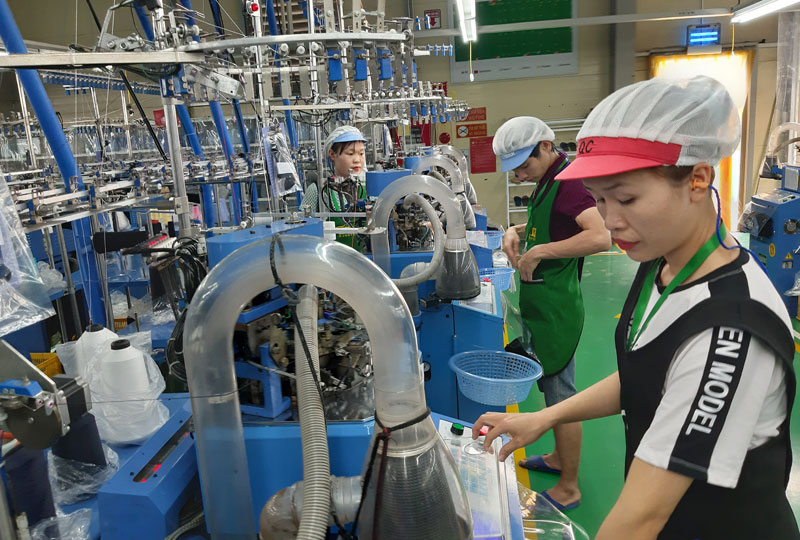
HBO - In the first quarter of 2019, considerable reforms were made in leadership and management of the whole political system of Hoa Binh province, and all-level authorities and sectors have joined together to realise socio-economic development tasks for this year.
Thanks to the province’s efforts, positive signs have been recorded in
different spheres, including stable socio-economic development and good
year-on-year growth in some sectors. Notably, the gross regional domestic
product (GRDP) grew by 8.63 percent in Q1.
While agricultural production has kept
developing, spring crop schedules have been fulfilled. The province has put
animal epidemics under control, helping livestock farming recover.
It has also pushed ahead with agricultural
restructuring and new-style rural area building, gaining positive results.
Sixty-three communes in Hoa Binh have obtained the new-style rural area status.
Particularly, Hoa Binh city also gained this status, making the province the
first in the northwestern region to have a district-level locality named
new-style rural area.
 The industrial production index in the Q1 of 2019
increased by 10.2 percent year on year. Photo: The Hoa Binh Knitting Co. Ltd provides
jobs for 400 people.
The industrial production index in the Q1 of 2019
increased by 10.2 percent year on year. Photo: The Hoa Binh Knitting Co. Ltd provides
jobs for 400 people.
Hoa Binh posted fair growth in its industrial
production, whose value was estimated at 8.68 trillion VND (over 374.3 million
USD). Businesses, especially foreign invested ones, still report stable and
developing performance with total export value rising 17.43 percent from a year
earlier. The province collected 838 billion VND for the State budget.
Additionally, many projects have been launched or completed on schedule.
Meanwhile, improvements have also been recorded
in social and cultural aspects. Hoa Binh has been working to tap into its
tourism potential in order to attract more visitors from both inside and
outside of the province. The number of travellers to local tourist sites has
continued surging, reaching 1.1 million, helping the province earn about 600
billion VND in tourism revenue.
In 2018, Hoa Binh climbed four places in the Provincial
Competitiveness Index rankings compared to the previous year. Many sub-indexes were
strongly improved, particularly the one on provincial authorities’ dynamism.
The provincial administration is demanding
relevant sectors to drastically carry out solutions to improve the local
investment and business climate and support the implementation of key
projects./.
According to data from the Hoa Binh Provincial Party Committee, the industrial production index for the first six months of 2025 is estimated to have increased by 20% compared to the same period last year. This marks the highest year-on-year growth rate for this period since 2020.
In the first six months of 2025, Hoa Binh province’s export turnover was estimated at 1.145 billion USD, marking an 18.11% increase compared to the same period in 2024. Import turnover was estimated at $ 804 million, a 17.15% increase, which helped the province maintain a positive trade balance.
The lives of the ethnic minority farmers in Tan Lac district have gradually improved thanks to the new directions in agricultural production. This is a testament to the collective strength fostered through the professional associations and groups implemented by various levels of the district’s Farmers’ Union.
With the motto the "product quality comes first,” after nearly one year of establishment and operation, Muong village’s Clean Food Agricultural and Commercial Cooperative, located in Cau Hamlet, Hung Son Commune (Kim Boi district), has launched reputable, high-quality agricultural products to the market that are well-received by consumers. The products such as Muong village’s pork sausage, salt-cured chicken, and salt-cured pork hocks have gradually carved out a place in the market and they are on the path to obtaining the OCOP certification.
In the past, the phrase "bumper harvest, rock-bottom prices" was a familiar refrain for Vietnamese farmers engaged in fragmented, small-scale agriculture. But today, a new spirit is emerging across rural areas of Hoa Binh province - one of collaboration, organisation, and collective economic models that provide a stable foundation for production.
Maintaining growing area codes and packing facility codes in accordance with regulations is a mandatory requirement for agricultural products to be eligible for export. Recently, the Department of Agriculture and Environment of Hoa Binh province has intensified technical supervision of designated farming areas and packing facilities to safeguard the "green passport" that enables its products to access international markets.



 The industrial production index in the Q1 of 2019
increased by 10.2 percent year on year. Photo: The Hoa Binh Knitting Co. Ltd provides
jobs for 400 people.
The industrial production index in the Q1 of 2019
increased by 10.2 percent year on year. Photo: The Hoa Binh Knitting Co. Ltd provides
jobs for 400 people.